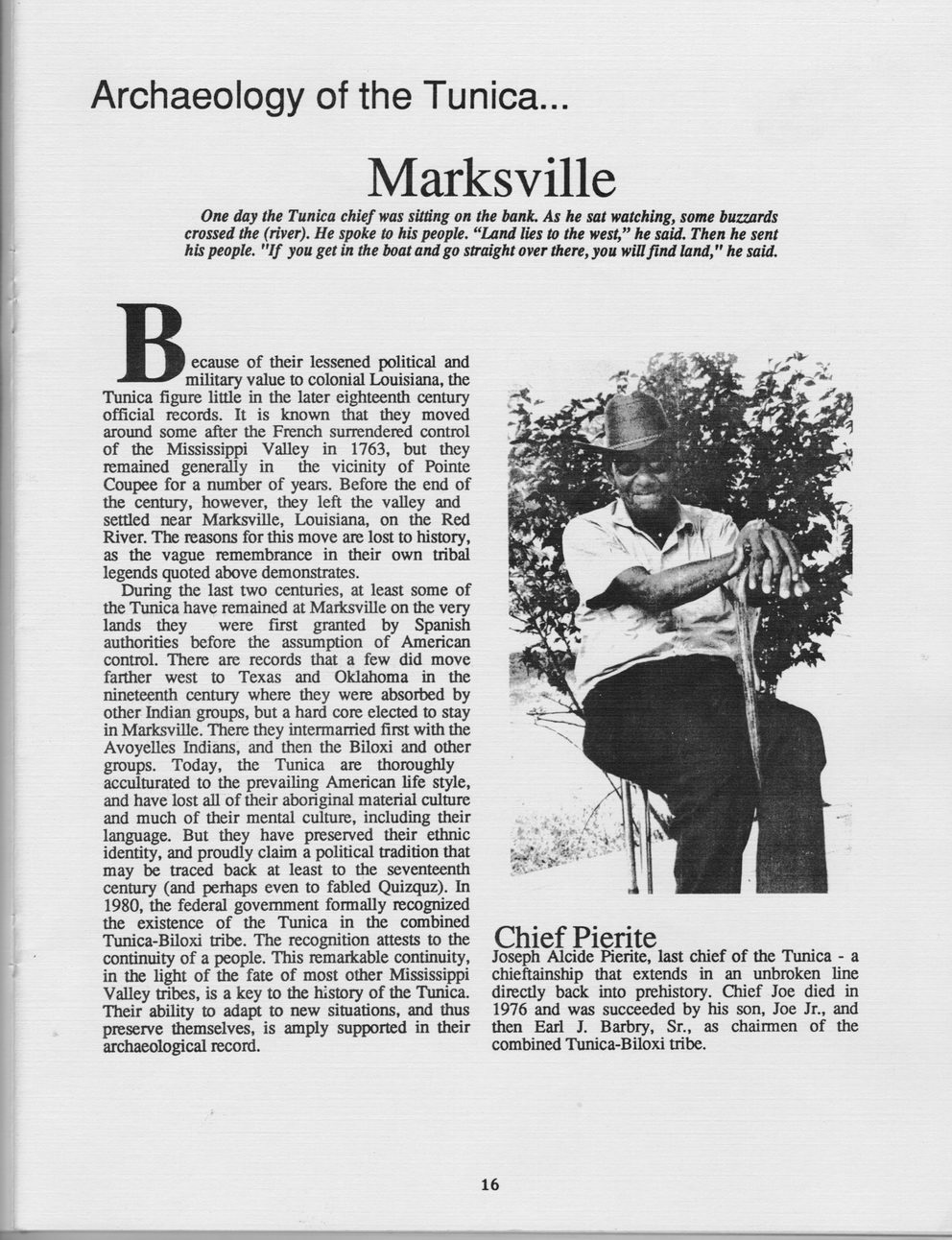This text was obtained via automated optical character recognition.
It has not been edited and may therefore contain several errors.
Archaeology of the Tunica.. Marksville One day the Tunica chief was sitting on the bank. As he sat watching, some buzzards crossed the (river). He spoke to his people. “Land lies to the west,” he said. Then he sent his people. "If you get in the boat and go straight over there, you win find land," he said. D ■ B ecause of their lessened political and military value to colonial Louisiana, the Tunica figure little in the later eighteenth century official records. It is known that they moved around some after the French surrendered control of the Mississippi Valley in 1763, but they remained generally in the vicinity of Pointe Coupee for a number of years. Before the end of the century, however, they left the valley and settled near Marksville, Louisiana, on the Red River. The reasons for this move are lost to history, as the vague remembrance in their own tribal legends quoted above demonstrates. During the last two centuries, at least some of the Tunica have remained at Marksville on the very lands they were first granted by Spanish authorities before the assumption of American control. There are records that a few did move farther west to Texas and Oklahoma in the nineteenth century where they were absorbed by other Indian groups, but a hard core elected to stay in Marksville. There they intermarried first with the Avoyelles Indians, and then the Biloxi and other groups. Today, the Tunica are thoroughly acculturated to the prevailing American life style, and have lost all of their aboriginal material culture and much of their mental culture, including their language. But they have preserved their ethnic identity, and proudly claim a political tradition that may be traced back at least to the seventeenth century (and perhaps even to fabled Quizquz). In 1980, the federal government formally recognized the existence of the Tunica in the combined Tunica-Biloxi tribe. The recognition attests to the continuity of a people. This remarkable continuity, in the light of the fate of most other Mississippi Valley tribes, is a key to the history of the Tunica. Their ability to adapt to new situations, and thus preserve themselves, is amply supported in their archaeological record. Chief Pierite Joseph Alcide Pierite, last chief of the Tunica - a chieftainship that extends in an unbroken line directly back into prehistory. Chief Joe died in 1976 and was succeeded by his son, Joe Jr., and then Earl J. Barbry, Sr., as chairmen of the combined Tunica-Biloxi tribe. 16

Native Americans The-Tunica-Biloxi-Tribe-its-Culture-and-People-(23)